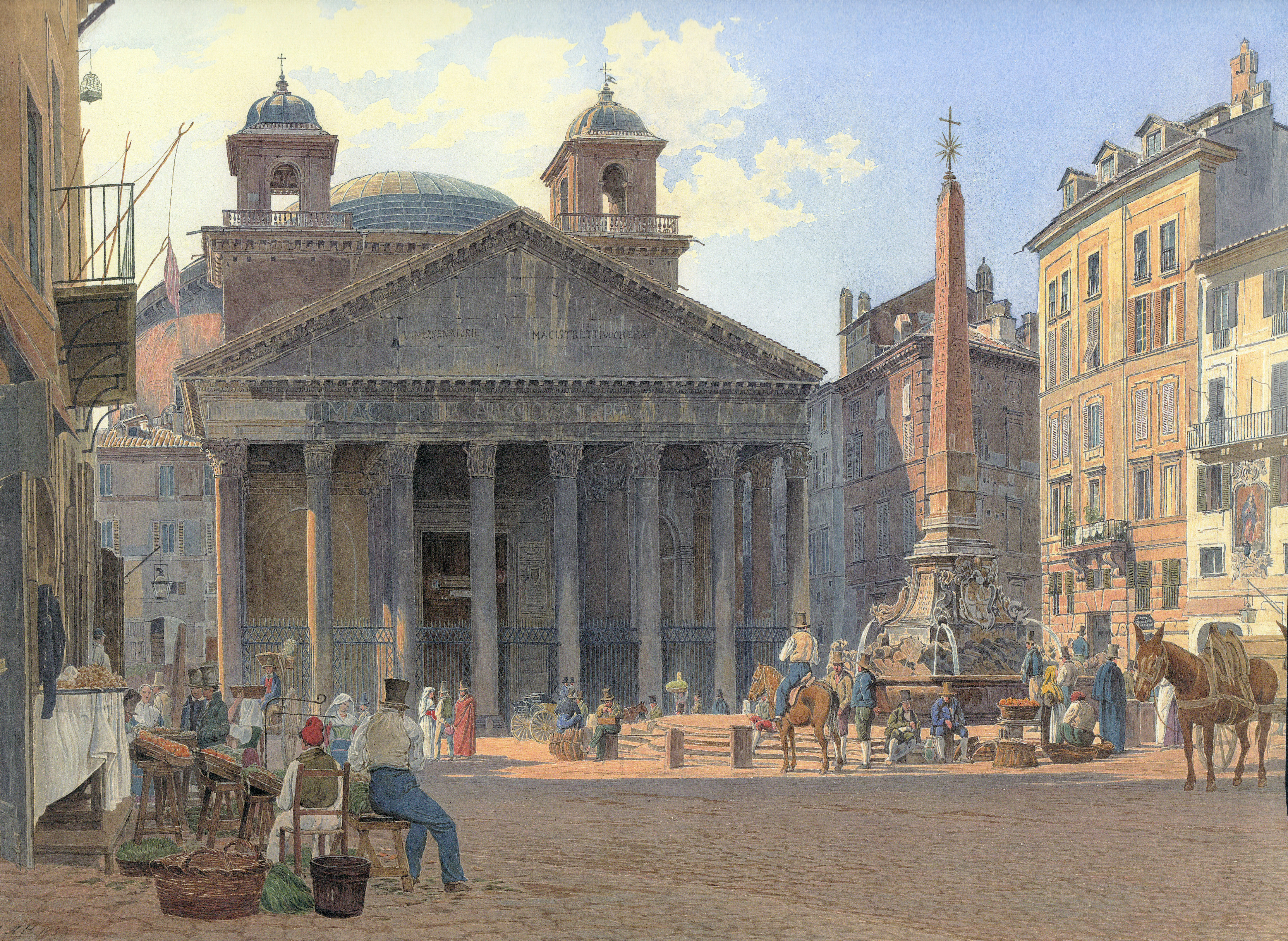Roman Roads
Sunday, December 4, 2016
Palazzo della Civilta Italiana
My attraction to this may site may seem strange or even off-putting. However, I'm of the opinion that the whole history of Rome must be viewed to gain a truly full experience. That includes fascist Rome, warts and all. Furthermore, the building isn't terribly unappealing, and perhaps more importantly it helps one get into the mind of fascist beliefs, primarily the aspiration of Mussolini to Ancient Rome. I believe that one should try to understand all political philosophies, even terrible ones that have horrible things, because only thourgh understanding the ideas and how they were arrived at can one then truly avoid the thinking that leads to those terrible ideas.
The Fountain of Moses
 |
| By Jastrow - Own work, Public Domain, https://commons.wikimedia.org/w/index.php?curid=1290908 |
I'm attracted to this site for two reasons. One, its combines beauty and practicality, like many sites on this blog. Two, people didn't like it. They thought it was mediocre, owing primarily to its over-sized attic that holds an overly large inscription. It's helpful to remind ourselves that not every project in Rome was successful, or even particularly noteworthy in its art or design.
St. Peter's Basilica
 |
| By I, Dfmalan, CC BY-SA 3.0, https://commons.wikimedia.org/w/index.php?curid=2435011 |
The amazing command of space and architecture alone makes visiting this site a must. However, St.Peter's is a package deal, containing the art superstar in the form of Michelangelo's Sistine Chapel frescoes. Other notable experiences include viewing the Throne of St.Peter or Tomb of Alexander VII by Bernini, or even climbing to the top of the beautiful dome. Just go visit it, you simply miss too much by not doing so.
San Luigi Dei Francesi
 |
| By Maros M r a z (Maros) - Own work, CC BY 2.5, https://commons.wikimedia.org/w/index.php?curid=5074206 |
The appeal of this site is obvious. The art of Caravaggio is some of the best in the Western tradition, and his Calling of St.Metthew one of the most famous in his own portfolio and that tradition. His art displayed master of chiaroscuro, the use of light and shadow for depth and dramatic effect. All three paintings exemplify this technique, while also showing a wonderful mastery of human form and realistic proportions. Anyone visiting Rome should take the chance to view these landmark art pieces.
Castel Sant'Angelo
 |
| By Livioandronico2013 - Own work, CC BY-SA 4.0, https://commons.wikimedia.org/w/index.php?curid=37316339 |
I love castles to death. In addition to being quite inspiring to look at, they are a monument to human stubbornness and refusal to die or surrender even in dire situations. Admittedly, I'm also quite attracted to the idea of having such a bastion to myself, these structures being the ultimate expressions of power, wealth, security, and nobility for much of post-Roman European history. Additionally, many of them are completely and hilariously overdone, some Catalan specimens having walls thicker than classrooms. While this castle doesn't have any immediately ridiculous proportions, its unqique history and design make it a must-see for my visit to Rome, and for anyone who loves castles as much as I do.
The Pantheon
 |
| By Jakob Alt - repro from artbook, Public Domain, https://commons.wikimedia.org/w/index.php?curid=10206191 |
When a site has such an enormous reputation and pedigree as does the Pantheon, anyone with the chance ought to take out the time to see it. Rarely do places such as these occupy such an abnormally large part of popular culture and tourism without having something worthwhile to be gained from visiting them. If you're not impressed, at least you'll be able to say you know what everyone is talking about, finally.
Trajan's Column
_September_2015-1.jpg/330px-Trajan_column_(Rome)_September_2015-1.jpg) |
| By Alvesgaspar - Own work, CC BY-SA 4.0, https://commons.wikimedia.org/w/index.php?curid=43808385 |
The Column of Trajan stand roughly 35 meters from ground to zenith. It was completed in 113 BC and contained 23 windings along its main length, depicting the Roman-Dacian War, which Trajan fought and won. The top is crowned with a statuette installed by Sixtus V, but probably originally had either an eagle or an image of Trajan. The friezes along the column's length depict not only the battles and victories in Dacia (modern day Romania, the Romanian language still being classified as a Romance language despite being surround on all sides by isolate or Slavic languages) but also the great logistical efforts that went into moving and supplying an army fielded so distant from the heart of the empire.
The last point there is most of my interest in this specific site. Too often, the focus of history is on great battles and military tactics, often leaving out the immense administrative challenges that had to be overcome. The column as a whole represents a culmination of art, storytelling, and history that should be far too tantalizing for anyone, including myself, pass up.
Subscribe to:
Posts (Atom)
